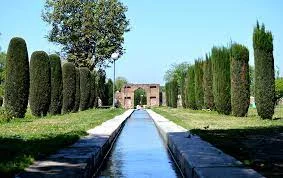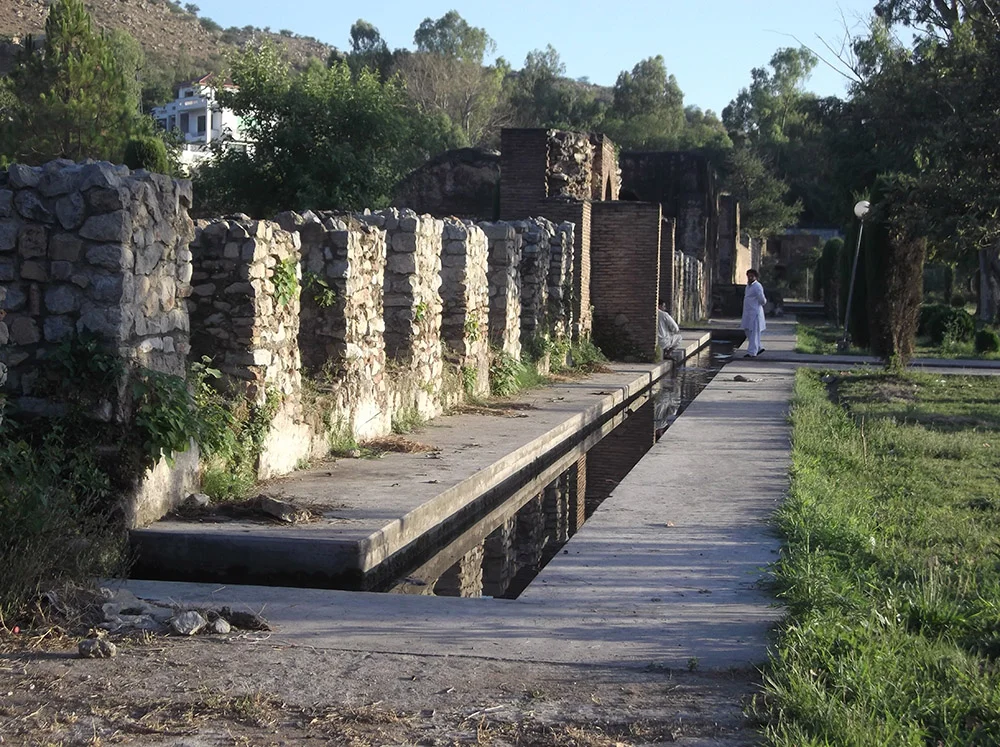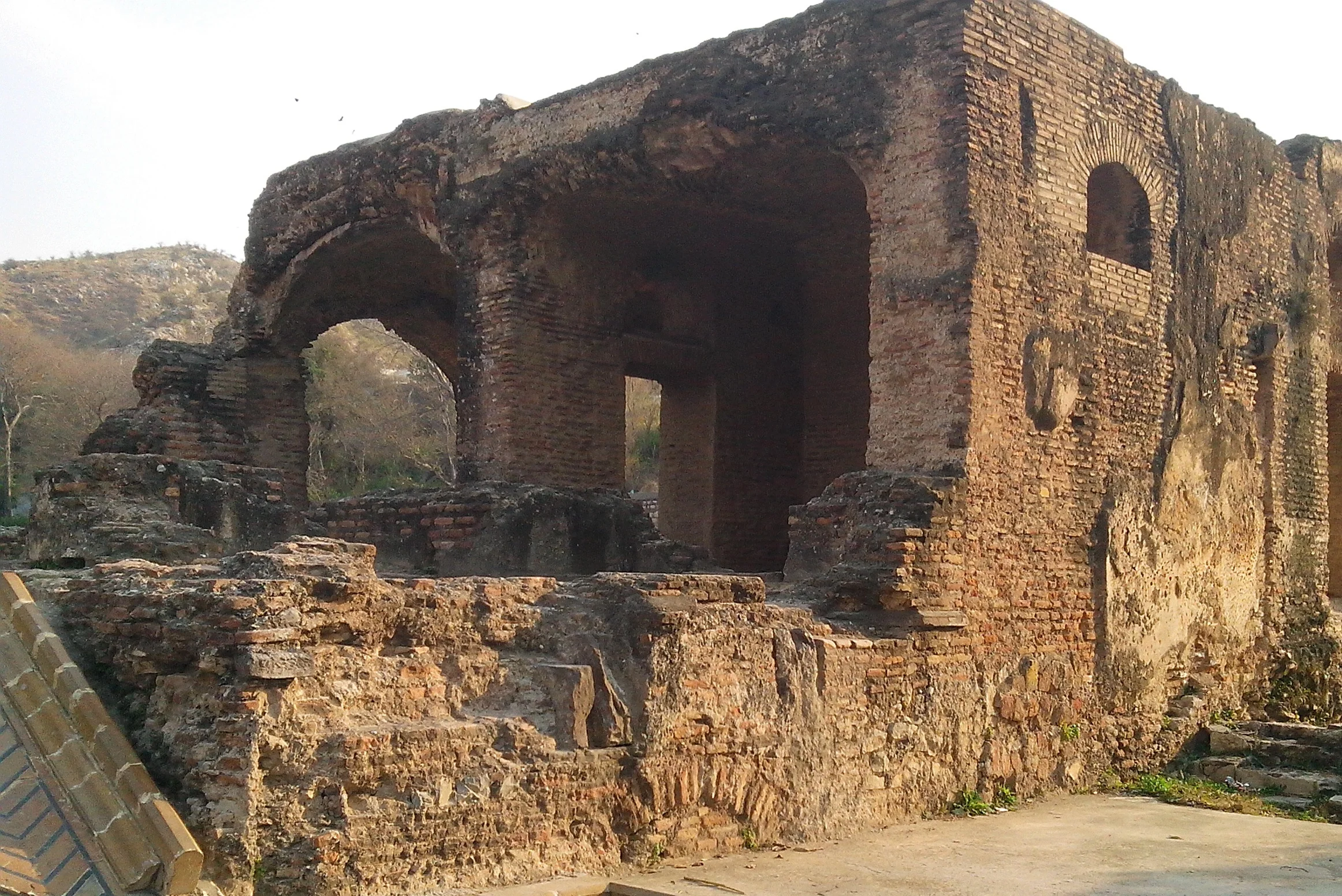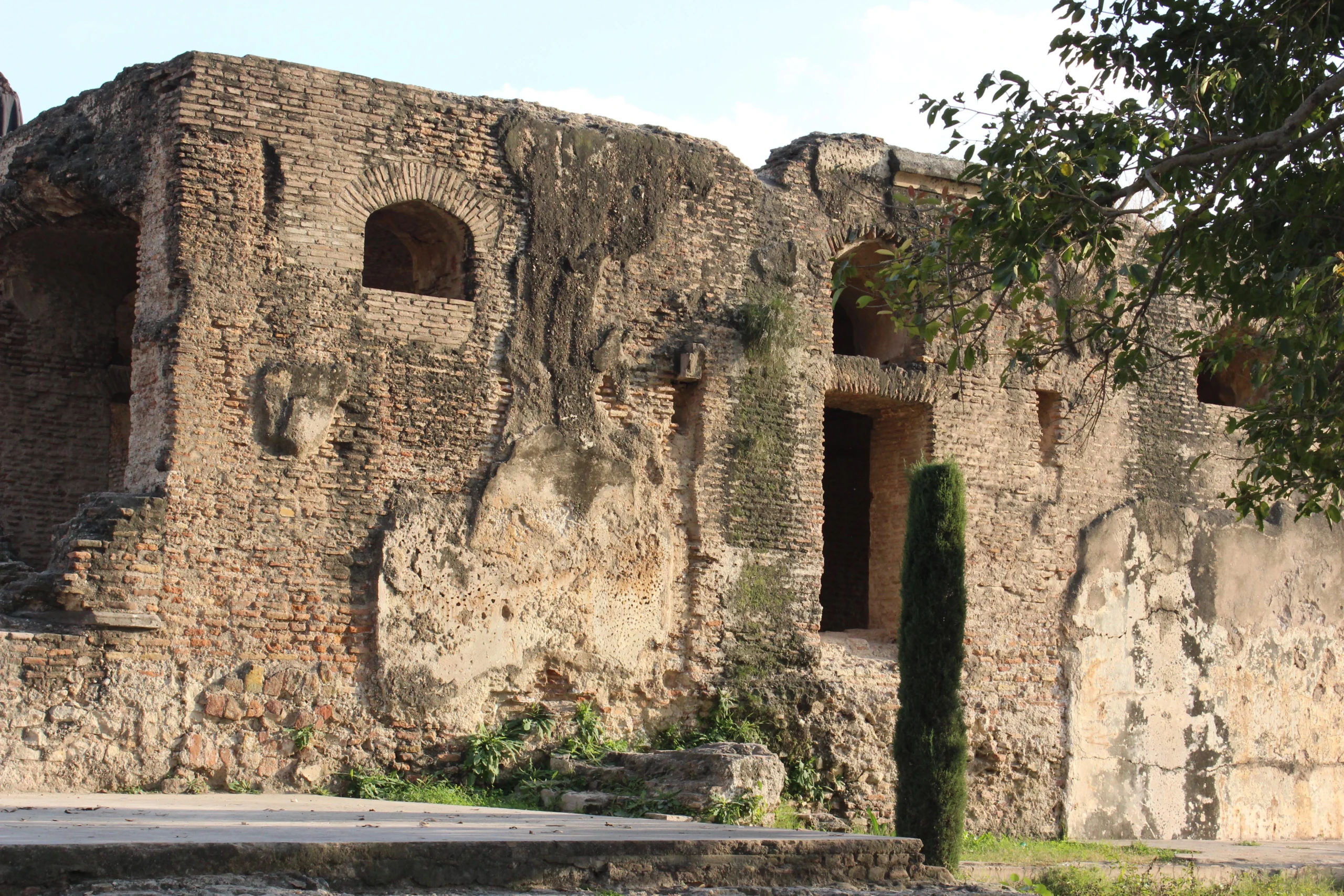Known by its other name, Mughal Garden Wah, Wah Gardens is a garden complex that dates back to the reign of Mughal Emperor Akbar the Great (1542-1605).

The Mughuls valued landscaping. Wherever they stopped during their conquest of Indus Land, Pakistan, and India, gardens were their primary priority. They commissioned the development of stunning, verdant landscapes with striking garden structures that continue to captivate tourists.
The magnificent Shalamar Gardens in Lahore, the Hiran Minar in Sheikhupura, the Kallar Kahar Garden, and several other surrounding structures and tombs still stand, albeit with differing the degrees of care and preservation. When discussing the Mughal garden, there is one more garden that deserves recognition and a visit yet is typically overlooked.
Mughal garden or Wah Bagh
The Origin of the Name “Wah Bagh”: Legend has it that during the Mughal Emperor Akbar’s visit, he was taken aback by the peaceful surroundings and landscape, and he is said to have exclaimed the English word “Wah” (or “Wow” in Hindi) upon witnessing the clear, rushing spring waters and water ponds filled with shoals of fish. The garden was thereafter dubbed Wah.

LOCATION
Garden is located on the major Grand Trunk Road, 30 miles to the northwest of Islamabad, 2 km to the east of the town of Hasan Abdal, and around 10 kilometers in front of the Archaeological Museum Taxila.
STRUCTURE
There are two terraces in the gardens: the top and lower terraces. The Mughal emperors first utilized these gardens as a transit camp. In 1639, the Emperor Shah Jahan stopped in Wah on his route to Kabul. The land had been developed and nurtured into gardens by the succeeding emperors, so he convened his central construction department and ordered the repair of the structures.
The garden has every characteristic of a classic Mughal garden. Built during Shah Jahan’s reign, it is well-known for its exquisite ponds, reflecting pools, water channels, waterfalls, and fountains. There are still several enormous Chanar trees in the garden; these trees were brought from Kashmir. Three water channels that run parallel to the garden’s length are supplied by a sizable water tank at the eastern end.
A big square tank on the upper terrace holds the collected water from the fifteen fountains that run from the central water channel, which is fed by numerous clean and cold springs that originated inside the garden.

The water originally ran over an inclined cascade adorned with a characteristic Mogul black-and-yellow marble chevron pattern, past a “Bara-Dari” (pavilion with twelve doors) and two flanking pavilions, one of which contained ornate bathrooms (hammam).
The water flowed through the garden’s main entrance gate, via a central water tank and platform, and along an axis bordered by cypress trees. Originally, plaster traceries representing fruits, vases, flora, and trees adorned the interior walls of the baradari.
A Royal Hammam, or bath, was attached to the southern wing of the baradari, and seven bastions, or watchtowers, were found along the outer wall.
The Mughals adored the tapering trees of cypress that surrounded the canals on the lower terrace. Originally, cold water ran between the magnificent romantic pavilion “Mahtabi” and transmitted into huge reflecting basins.
HISTORY
On Muharram 12, 1016 A.D., Emperor Jahangir rested in Wah Garden on his trip to Kashmir. The water falls rather quickly. The main waterfall outflow is located in the middle of the pond. There is hardly much that Raja Maan Singh has built. There are several fish in the pond that are about a quarter of a yard long.

Currently known as Wah Garden, the Emperor had a scaled-down version of Shalamar Gardens constructed at the location by Ahmad Memaar Lahori, the same Mughal architect responsible for Shalamar Bagh, Lahore. Whatever the cause, the Mughals’ Wah Gardens are distinctive, beautifully set out, and constructed, and they also provide guests with a breath of fresh air.
MUGAL HISTORY OF WAH BAGH
The history of Hasan Abdal’s springs and shrines is considerably longer, but in his autobiography Tuzuk E Jahangiri, Jahangir, the fourth Mughal emperor, gives the earliest comprehensive description of the location and its garden.
During the 1639 journey to Kabul, Emperor Shah Jahan rested in Wah. He gave the order for the structures to be rebuilt by calling his central construction department. The gardens, mansions, and inns were designed by the renowned architect of the day, Ahmed Maamar Lahoree. It took two years for the construction to be completed under his direction. The garden was designed in the manner of Mughal architecture. He created exquisite waterfalls, canals, and twelve-door constructions. At the southernmost point of these twelve-door buildings, he constructed restrooms with a blend of hot and cold water. Plaster has been applied to the interior of the buildings. The smaller rooms contain floral and petal decorations on their walls.
Shah Jahan stayed there four times when visiting Kabul: in 1646, 1647, 1649, and 1654. The garden was proclaimed by Shah Jahan’s contemporaries, Abdul Hameed Lahore and Muhammad Saleh Kamboh, to be a trustee of heaven and a stand-in for the garden of paradise on earth.

The Mughal Emperor Aurangzeb stayed in the garden in July 1676. During the Durrani Empire (1747–1826) and subsequent Sikh administration (1826–1849), the garden suffered significant damage. In 1865, during the conquest of Punjab, Nawab Muhammad Hayat Khan received the gardens from the British Government.
In 1865, Nawab Hayat Khan received the gardens from the British Government. Additionally, the well-known Mugal Baagh was transformed into a fruit garden, with the majority of the buildings buried beneath the planted area. A pumping station provided spring water for the Wah Basti and the new housing projects.
AFTER 1976
Given the gardens’ beautiful structure and historical significance, the government of Pakistan assumed control of the Wah Garden and gave it to the Department of Archaeology for archaeological research as well as to maintain and start repairs. In order to preserve and restore the garden, work was initiated in 1976–1977.

When the extensive excavation work began in 1993–1996–many buildings, including a water tank and channel system, were unearthed. Incredibly, archaeologists found an unexcavated garden next to the main water tank platform. The newly discovered area comprises the original 14 x 12-foot main platform floor as well as additional stairs that belong to the same building.
Archaeologists believe this find is significant because it will provide insight into the true design of the main water tank and its perimeter. Additionally uncovered was the old drainage system that connected to the Gardens’ main water tank.
An amazing original freshwater drain connected through the wall and the main tank wall’s walkway were uncovered at a depth of one foot.
The southern corner of the same ditch was dug up to three and a half feet, revealing an arched.
CURRENT SITUATION AND RECONSTRUCTION
Now that the garden has been restored in accordance with its original plan, many people come to appreciate its beauty, bubbling springs, and serene environment.

The four garden walls, the large pond, the canals, and the walks are almost completely rebuilt. Soon, the twelve-door constructions will be repaired, the restrooms and waterfalls will be finished, and the trees that had stood there during the Mughal era will be planted again. After everything is finished, the gardens should revert to how they were.
CONCLUSION
The Pakistan Department of Archaeology is now restoring the site, which was mainly abandoned following Mughal control and lay in ruins for a period. Decades later, the Archeology department started renovations at the behest of Lt Gen Omar Mahmood Hayat, Chairman POF Wah. To preserve and restore the garden, work has begun.



65 Comments
Olivewidly
купить аккаунт маркетплейс аккаунтов
Peterdaw
платформа для покупки аккаунтов https://marketplace-akkauntov-top.ru/
RichardTen
услуги по продаже аккаунтов magazin-akkauntov-online.ru/
JamesCledo
аккаунт для рекламы услуги по продаже аккаунтов
Olivewidly
покупка аккаунтов платформа для покупки аккаунтов
Bryantbeini
аккаунты с балансом маркетплейс аккаунтов соцсетей
RichardTen
маркетплейс аккаунтов маркетплейс аккаунтов
DavidNaisk
Verified Accounts for Sale Account marketplace
JasonRah
Account marketplace Account Sale
MichaelMibra
Find Accounts for Sale Account Selling Service
WalterFlact
Social media account marketplace Website for Buying Accounts
JaredSoals
Online Account Store Account trading platform
BrianCoaps
Database of Accounts for Sale Account Store
Ronaldhex
Buy and Sell Accounts Social media account marketplace
ThomasGat
Buy Pre-made Account Accounts for Sale
BruceCUBOW
Buy accounts Accounts for Sale
Williamsep
Purchase Ready-Made Accounts Secure Account Sales
Ronaldhex
Guaranteed Accounts Ready-Made Accounts for Sale
EdmundDeats
guaranteed accounts account trading
BrandonGuede
secure account sales account purchase
RomeoGaH
database of accounts for sale account store
DonaldSab
account trading platform purchase ready-made accounts
Keithvet
account selling service buy pre-made account
RobertGeasy
account exchange accounts for sale
Hectorwem
account buying service website for selling accounts
CarlosMar
account selling platform website for selling accounts
Richardusero
account trading platform account exchange service
Stephentraky
secure account sales social media account marketplace
Carlosjeape
sell account buy pre-made account
Clydedoulp
account trading service buy accounts
JohnnyDot
profitable account sales accounts market
ThomasPouff
account trading platform profitable account sales
PhilipDib
buy and sell accounts sell accounts
RandalOxilt
website for buying accounts sell accounts
RichardMouse
buy accounts ready-made accounts for sale
Zacharymax
accounts marketplace online account store
Kevinjoipt
account exchange account selling service
Raymondweiff
account purchase buy account
Thomasnussy
account catalog account sale
NathanKiz
account sale account selling platform
BruceObere
account catalog account trading platform
Danielnot
social media account marketplace ready-made accounts for sale
Geraldmox
account trading platform account market
Jasonvon
accounts market account purchase
ThomasBeada
buy pre-made account buy account
LarryBal
Unearthing the Mystery: What secrets and stories do the ancient architectural designs and water features of Wah Gardens, as constructed during the rule of Mughal Emperor Akbar the Great, hold, that reveal the cultural and artistic evolution of the Mughal dynasty? [url=https://www.bizmaker.org/vilnius/business-services/esim-plus-279909]My blog[/url]
accounts-offer.org_Cousy
guaranteed accounts https://accounts-offer.org/
accounts-marketplace.xyz_Cousy
account trading platform https://accounts-marketplace.xyz
buy-best-accounts.org_Cousy
accounts marketplace https://buy-best-accounts.org
social-accounts-marketplaces.live_Cousy
online account store https://social-accounts-marketplaces.live
accounts-marketplace.live_Cousy
account buying platform account marketplace
social-accounts-marketplace.xyz_Cousy
guaranteed accounts https://social-accounts-marketplace.xyz
buy-accounts.space_Cousy
buy account accounts market
buy-accounts-shop.pro_Cousy
buy and sell accounts https://buy-accounts-shop.pro/
social-accounts-marketplace.live_Cousy
database of accounts for sale https://social-accounts-marketplace.live
buy-accounts.live_Cousy
ready-made accounts for sale account marketplace
accounts-marketplace.online_Cousy
account catalog account market
accounts-marketplace-best.pro_Cousy
find accounts for sale https://accounts-marketplace-best.pro
akkaunty-na-prodazhu.pro_Cousy
маркетплейс аккаунтов akkaunty-na-prodazhu.pro
rynok-akkauntov.top_Cousy
покупка аккаунтов https://rynok-akkauntov.top
kupit-akkaunt.xyz_Cousy
биржа аккаунтов https://kupit-akkaunt.xyz
akkaunt-magazin.online_Cousy
продажа аккаунтов https://akkaunt-magazin.online
akkaunty-market.live_Cousy
площадка для продажи аккаунтов akkaunty-market.live
RobertBliva
Эта познавательная публикация погружает вас в море интересного контента, который быстро захватит ваше внимание. Мы рассмотрим важные аспекты темы и предоставим вам уникальныеInsights и полезные сведения для дальнейшего изучения.
Получить дополнительную информацию – https://timbjerg.dk/2017/06/16/the-big-design-wall-likes-pictures
Busterciz
Группа препаратов
Получить дополнительные сведения – [url=https://vyvod-iz-zapoya-ekb8.ru/]вывод из запоя цена екатеринбург.[/url]